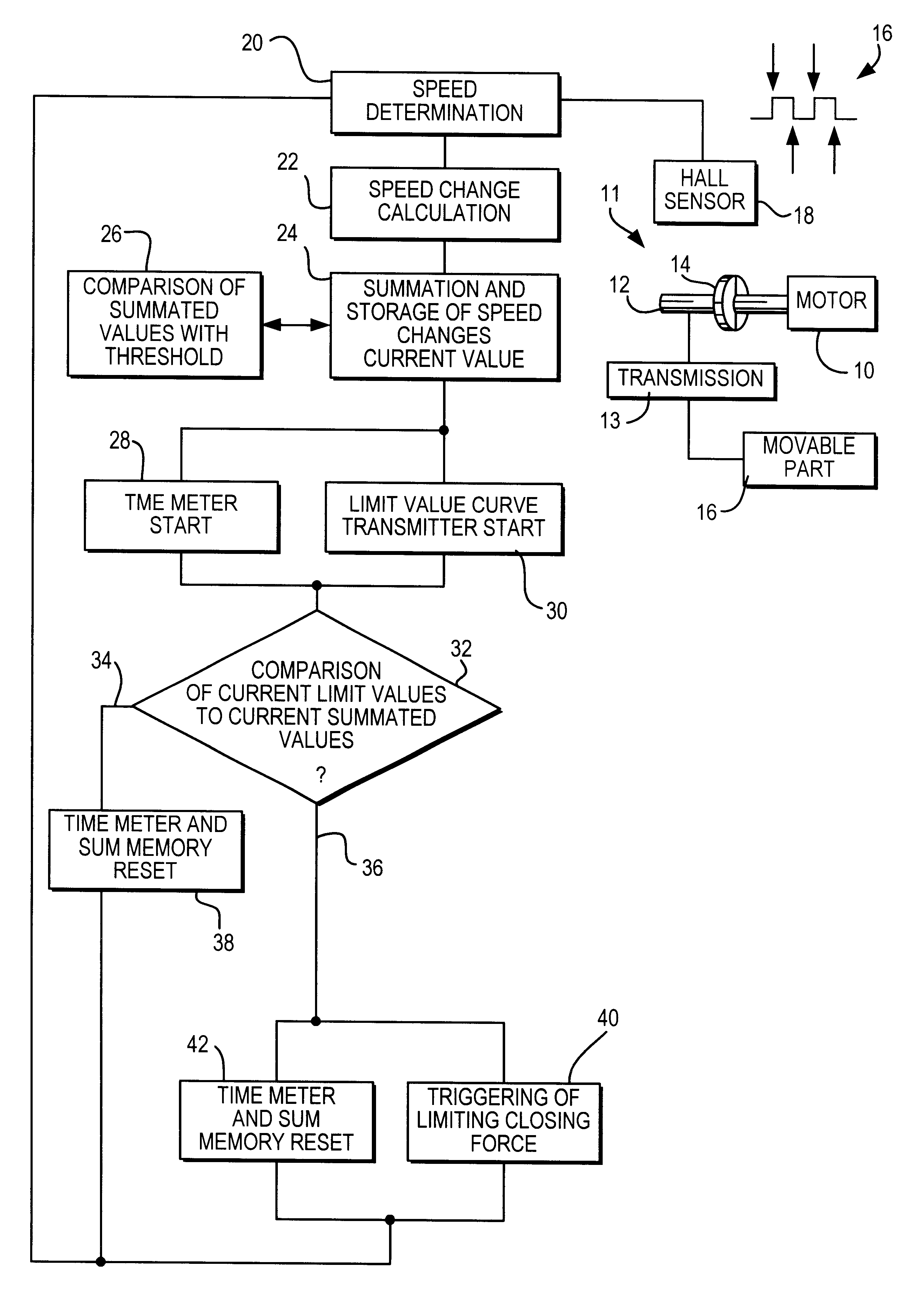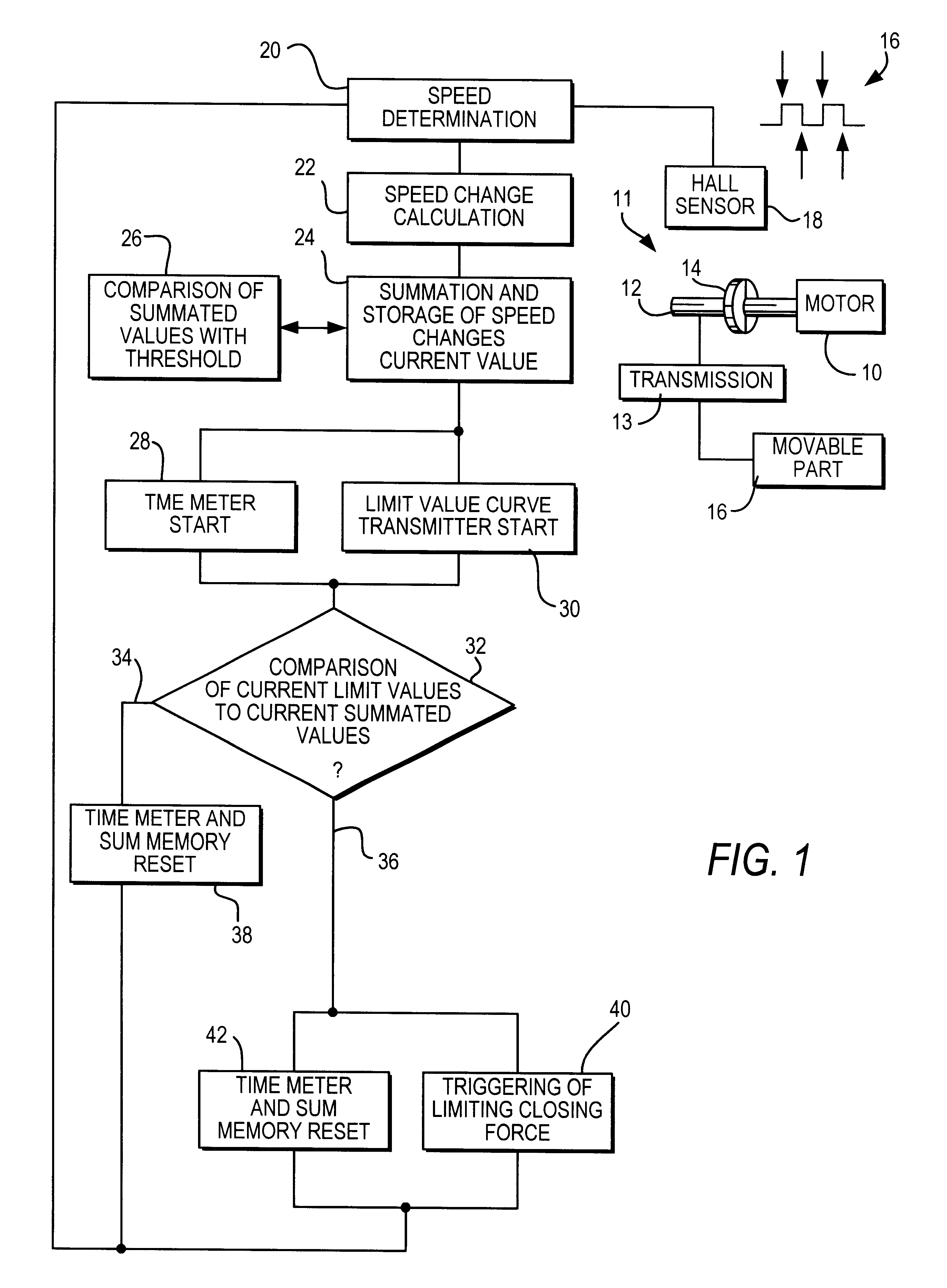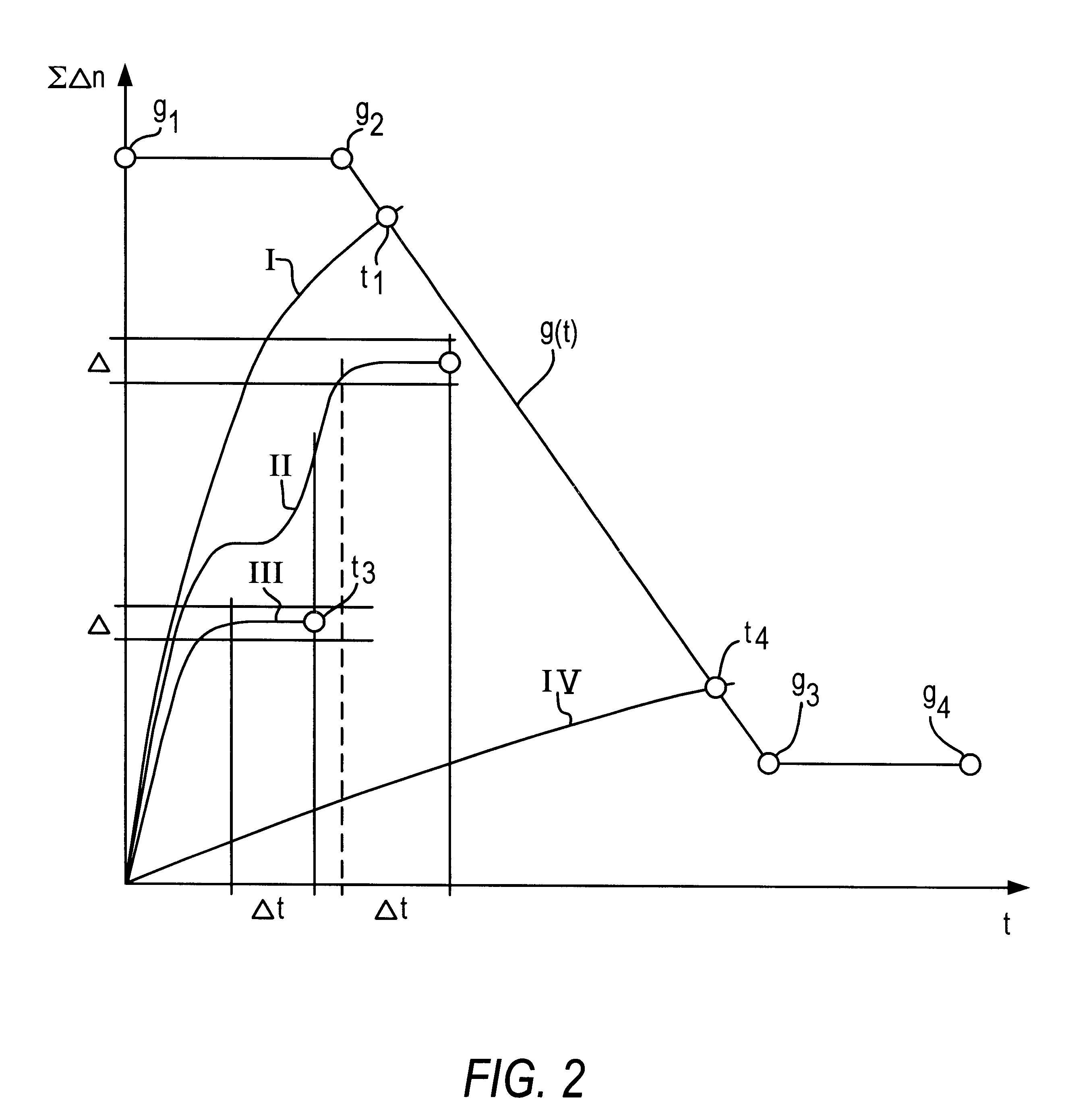Method for limiting the closing force of movable components
- Summary
- Abstract
- Description
- Claims
- Application Information
AI Technical Summary
Benefits of technology
Problems solved by technology
Method used
Image
Examples
Embodiment Construction
The exemplary embodiment of a method according to the invention for limiting the closing force of movable parts shown in FIG. 1 contains schematic depictions of individual parts of an adjusting drive and a flow chart in a number of steps.
A motor 10 of an adjusting drive 11 drives a shaft 12 which is connected via a transmission unit 13 to a movable part 16. A two-pole annular magnet 14 is non-rotatably mounted on the shaft 12 and, upon rotation of the shaft 12, generates periodic edge alternations 16 in a Hall sensor 18.
In a first stage of the method, the speed n of the motor 10 is determined in the process step 20, based on the periodic edge alternations 16 of the Hall sensor 18. In a second process step 22, a value .DELTA.n that is typical for the current motor speed change is calculated based on the respective current motor speeds n. This calculation yields the difference between a current speed value n.sub.i and an immediately preceding speed value n.sub.i-1. In the borderline c...
PUM
 Login to View More
Login to View More Abstract
Description
Claims
Application Information
 Login to View More
Login to View More - R&D
- Intellectual Property
- Life Sciences
- Materials
- Tech Scout
- Unparalleled Data Quality
- Higher Quality Content
- 60% Fewer Hallucinations
Browse by: Latest US Patents, China's latest patents, Technical Efficacy Thesaurus, Application Domain, Technology Topic, Popular Technical Reports.
© 2025 PatSnap. All rights reserved.Legal|Privacy policy|Modern Slavery Act Transparency Statement|Sitemap|About US| Contact US: help@patsnap.com



